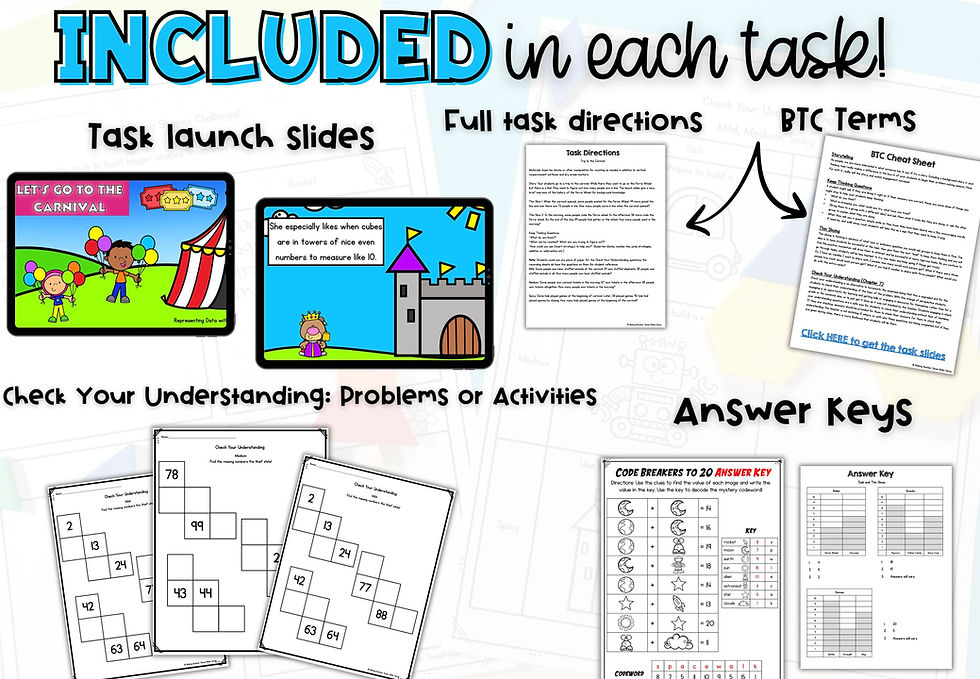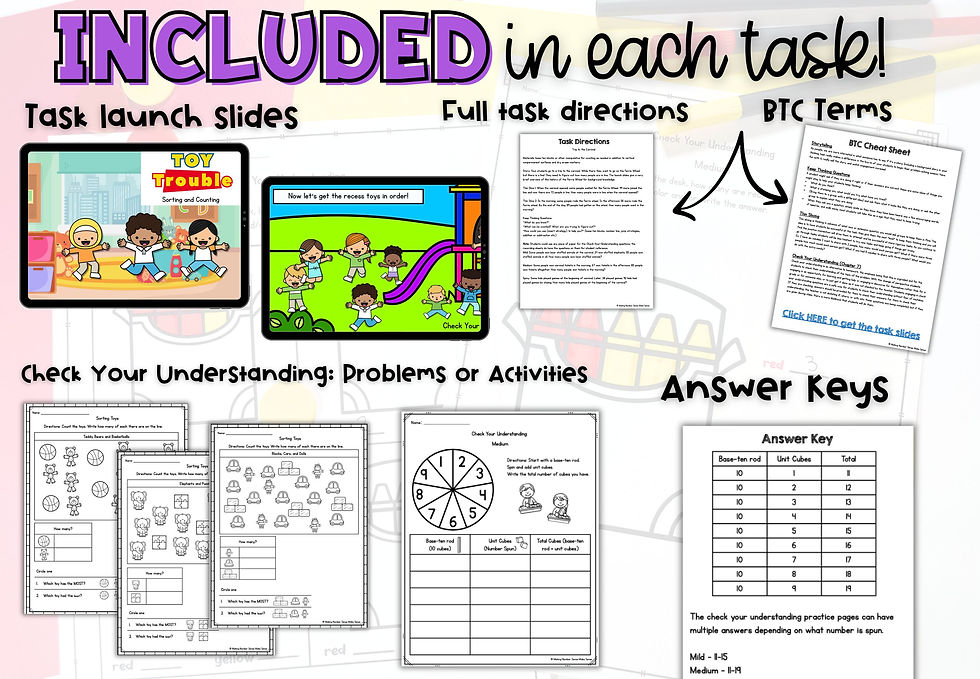8 Rote Counting to 100, Skip Counting Lessons, and Routine Ideas
- Lara

- Aug 19, 2023
- 3 min read
Updated: Aug 23, 2023
What do you think of when I say five? You may think of the numeral 5 (symbolic representation, identification), the verbal, “five” and how many 5 is (quantitative). A student needs to develop all three concepts simultaneously to develop their sense of number. If some develop without the other, it can limit your students’ mathematical ability.
So how do you develop these concepts?
Opportunity.
Kids need A LOT of opportunities to practice the number sequence, develop one-to-one correspondence, and answer the question “how many?”
Number Sequence
The number sequence is knowing the order in that numbers are said. Knowing this leads to an understanding that each new number is one more than the previous number. When starting to learn the number sequence, students don't yet really attach a meaning to the words, but they do need to learn them.
I’ll be honest, repeating the number sequence can be dry, and often the students who need to recite the sequence may be nonparticipants when the whole class is counting. Some ideas you can use to help students learn the number sequence:
Number songs are great for counting to 100, but mainly to skip counting! Music is a great way to help kids remember the number sequence.
Counting in calendar math
Movement Counting- As we count to the 100th day of school, I reveal a decade at a time on the 100s chart and we choose a movement we do for each decade we count.
Counting Around Games- This game can be played in small or full groups, pick a number range for example 1-5, and have all students stand in a circle and each student say a number in order. The student who says 5 sits down and the count resumes with the next student starting at 1. The game continues until one student is left. This game is perfect for repeating tricky number sequences like crossing a decade (ex 17,18,19,20,21 then starting again at 17).
Counting Backwards around the circle- similar to the previous game, students start in a circle, or in groups sitting down counting 1,2,3,4,5, as they stand. Once all students are standing at 5, they reverse the order 5,4,3,2,1 and sit down as they count.
Blast Off Counting- I use this specifically for counting backward from 10 to zero. Staring in a crouching position from ten and go up a little for each number until you are fully standing at zero and use your hands like a blast-off.
Choral Counting- this is great for shorter number sequences you can learn about it in this post or video, or check out the Choral Counting and Counting Collections book.
Skip Counting
Beyond rote counting is skip counting. Skip counting just like regular counting can be an abstract idea if students haven’t had a lot of practice with counting and why you might use it.
Abstract ideas need to be made concrete first for understanding. If students can see that there is value in a skill it makes more sense.
One way to bring skip counting to life is by a math task like dice skip counting. In this collection of math tasks, students are given an image of dice and they have to figure out how many pips (dots) are shown in the picture.
These tasks will help your student begin to understand that skip counting has a purpose that also leads to complex mathematical thinking, in the areas of counting and repeated addition.
They will have the chance to go up in “levels” with thin-slicing and chances to apply the strategies they worked on in groups in more difficult problems that your kids will love!
You can try the skip counting by 5’s task and see how it goes for your students.
What rote counting strategies are you going to try?







Comments